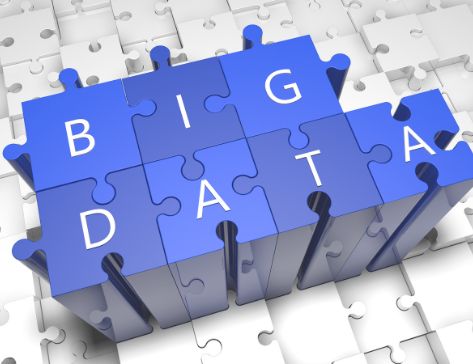
The Impact of Big Data Analytics on Marketing Strategy in 2025
Big data analytics has revolutionized how businesses approach marketing strategies in today’s digital landscape. The massive volumes of customer information now available have transformed decision-making processes, customer targeting, and campaign optimization across industries. As we navigate through 2025, the influence of data-driven marketing continues to grow exponentially, creating both opportunities and challenges for marketers worldwide.

Understanding Big Data in the Marketing Context
Big data refers to extremely large datasets that can be analyzed to reveal patterns, trends, and associations related to human behavior and interactions. In marketing, this translates to customer information collected from various touchpoints including social media, website interactions, purchase history, and demographic details. The four V’s of big data—volume, velocity, variety, and veracity—have expanded to include value and visualization, creating a comprehensive framework for understanding consumer behavior analysis in unprecedented detail.
Key Ways Big Data is Transforming Marketing
1. Hyper-Personalization of Customer Experiences
Gone are the days of one-size-fits-all marketing approaches. Big data enables marketers to create highly personalized experiences by analyzing individual customer preferences, behaviors, and purchase patterns. This level of personalization extends beyond simply addressing customers by name in emails—it involves tailoring product recommendations, content delivery, and even pricing strategies to match specific customer profiles.
According to recent studies, personalized marketing campaigns deliver 5-8 times the ROI on marketing spend and can lift sales by 10% or more. Companies implementing data-driven personalization strategies report significant improvements in customer engagement metrics and conversion rates.
2. Predictive Analytics for Anticipatory Marketing
Perhaps the most powerful application of big data in marketing is predictive analytics—the ability to forecast customer behaviors and market trends before they occur. By analyzing historical data patterns, marketers can now anticipate:
- Which customers are likely to churn
- What products customers might purchase next
- Optimal timing for promotional campaigns
- Emerging market trends before competitors identify them
Predictive marketing analytics has revolutionized e-commerce success by enabling businesses to be proactive rather than reactive in their marketing approaches, significantly improving campaign effectiveness and resource allocation.
3. Real-Time Marketing Optimization
The velocity component of big data allows marketers to analyze information as it’s generated, enabling real-time campaign adjustments. This capability has transformed digital advertising, where bid strategies, creative elements, and targeting parameters can be optimized instantly based on performance data.
Real-time marketing optimization has become particularly crucial in competitive industries where market conditions change rapidly. Companies leveraging real-time data analytics report 20-30% improvements in campaign performance metrics compared to traditional optimization approaches.
Practical Applications of Big Data in Marketing Strategies
Customer Segmentation and Targeting
Big data has revolutionized customer segmentation by moving beyond basic demographic classifications to complex behavioral and psychographic profiles. Modern segmentation might include:
- Digital behavior patterns (browsing habits, content preferences)
- Purchase frequency and value metrics
- Brand interaction styles and preferred channels
- Response patterns to different marketing stimuli
- Lifestyle indicators and value alignments
These sophisticated segmentation models enable precision targeting that dramatically improves marketing efficiency and reduces wasted ad spend.
Content Optimization and Delivery
Content marketing has been transformed by data analytics that reveal exactly what types of content resonate with specific audience segments. By analyzing engagement metrics, social sharing patterns, and conversion data, marketers can:
- Identify optimal content formats for different customer segments
- Determine ideal content length and complexity levels
- Pinpoint the most effective topics and themes
- Optimize content delivery timing across channels
- Personalize content experiences at scale
This data-driven approach to content strategy has replaced intuition-based content creation, resulting in higher engagement rates and improved content ROI.
Customer Journey Mapping and Optimization
Big data analytics provides unprecedented visibility into the customer journey, allowing marketers to identify critical touchpoints, pain points, and conversion opportunities. This comprehensive view enables:
- Identification of drop-off points in the conversion funnel
- Attribution modeling to understand channel effectiveness
- Cross-channel journey optimization
- Personalized journey paths for different customer segments
Companies that implement data-driven journey optimization report significant improvements in conversion rates and customer satisfaction metrics.
Implementing Big Data Marketing: Best Practices
1. Start with Clear Business Objectives
Successful big data marketing initiatives begin with clearly defined business objectives. Rather than collecting data for its own sake, identify specific marketing challenges or opportunities that data analytics can address:
- Reducing customer acquisition costs
- Improving retention rates for high-value customers
- Increasing average order value
- Optimizing marketing channel mix
- Enhancing customer lifetime value
These focused objectives ensure that data collection and analysis efforts remain aligned with business priorities.
2. Develop a Comprehensive Data Strategy
An effective data strategy addresses data collection, integration, quality, governance, and activation. Key components include:
- Data source identification and integration planning
- Data quality standards and maintenance procedures
- Privacy compliance frameworks and consent management
- Data access protocols and security measures
- Analytics capability development roadmap
This strategic approach prevents the common pitfall of accumulating vast amounts of data without the means to derive actionable insights.
3. Invest in the Right Technology Stack
The technology infrastructure supporting big data marketing initiatives must be capable of handling data at scale while providing accessible analytics capabilities. Essential components include:
- Customer data platforms (CDPs) for unified customer profiles
- Marketing automation platforms for activation
- Advanced analytics tools with machine learning capabilities
- Data visualization solutions for insight communication
- Integration middleware to connect disparate systems
The right technology stack enables marketers to move from data collection to insight generation to action with minimal friction.
4. Build Cross-Functional Data Teams
Effective big data marketing requires collaboration between marketing professionals, data scientists, and technology specialists. Organizations should foster cross-functional teams that combine:
- Marketing domain expertise
- Data science and analytics capabilities
- Technology implementation skills
- Business strategy understanding
These diverse skill sets ensure that technical capabilities translate into marketing outcomes that drive business results.
Challenges and Ethical Considerations
While big data offers tremendous marketing opportunities, it also presents significant challenges:
Data Privacy and Regulatory Compliance
The proliferation of privacy regulations like GDPR, CCPA, and emerging frameworks requires marketers to balance data utilization with compliance requirements. Organizations must implement:
- Transparent data collection practices
- Robust consent management systems
- Data minimization principles
- Clear data retention policies
Failure to address these requirements can result in significant penalties and reputational damage.
Data Quality and Integration Issues
The value of big data analytics depends entirely on data quality. Common challenges include:
- Inconsistent data formats across systems
- Duplicate or conflicting customer records
- Incomplete data sets
- Outdated information
Addressing these issues requires ongoing data governance and quality management processes.
Ethical Use of Customer Data
Beyond legal compliance, marketers must consider the ethical implications of data-driven marketing practices. This includes:
- Avoiding manipulative targeting practices
- Ensuring algorithmic fairness and preventing bias
- Respecting customer expectations about data usage
- Providing genuine value in exchange for data sharing
Organizations that establish ethical data use principles build stronger customer trust and brand reputation.
The Future of Big Data in Marketing
Looking ahead, several emerging trends will shape the evolution of big data marketing:
AI and Machine Learning Integration
The combination of big data with artificial intelligence and machine learning will enable increasingly sophisticated marketing applications:
- Automated content creation and optimization
- Advanced customer behavior prediction models
- Real-time personalization at unprecedented scale
- Autonomous marketing systems that self-optimize
These capabilities will dramatically increase marketing efficiency while enabling new forms of customer engagement.
First-Party Data Emphasis
As third-party cookies phase out and privacy regulations tighten, marketers are shifting focus to first-party data strategies:
- Building direct customer relationships that generate proprietary data
- Creating value exchanges that motivate data sharing
- Developing sophisticated first-party identity resolution capabilities
- Forming strategic data partnerships that respect privacy boundaries
This shift represents a fundamental change in how marketing data is sourced and utilized.
Edge Computing and Real-Time Analytics
The growth of edge computing will enable real-time data processing closer to the source, opening new possibilities for immediate marketing responses:
- In-store personalization based on real-time behavior
- Immediate response to customer service interactions
- Location-based marketing with minimal latency
- Dynamic pricing based on immediate context
These capabilities will further blur the line between digital and physical customer experiences.
Conclusion
Big data analytics has fundamentally transformed marketing from an intuition-driven discipline to a data-science-powered practice. The ability to collect, analyze, and act upon vast amounts of customer data has created unprecedented opportunities for personalization, prediction, and optimization. As we move forward, organizations that develop sophisticated data capabilities while respecting privacy concerns and ethical considerations will gain significant competitive advantages in the marketplace.
The future of marketing belongs to companies that can balance the technical aspects of big data with the human elements of customer relationships. Those that succeed will create more relevant, valuable, and native advertising experiences that resonate with customers while driving business results. The big data revolution in marketing is just beginning, and its full potential remains to be realized.


